Limited resources of natural quartz crystal suitable for direct electronic or optical use are available throughout the world. World dependence on these resources will continue to decline because of the increased acceptance of cultured quartz crystal as an alternative material; however, use of cultured quartz crystal will mean an increased dependence on lascas for growing cultured quartz.
Trends indicate that demand for quartz crystal devices should continue to grow, and consequently, quartz crystal production should remain strong well into the future. Growth of the consumer electronics market (for products such as personal computers, electronic games, and cellular telephones) will continue to drive global production. The growing global electronics market may require additional production capacity worldwide.
In the past several years, cultured quartz crystal was increasingly produced in the world, primarily in Asia. Electronic applications accounted for most industrial uses of quartz crystal; other uses included special optical applications.Virtually all quartz crystal used for electronics was cultured rather than natural crystal. Electronic-grade quartz crystal was essential for making filters, frequency controls, and timers in electronic circuits employed for a wide range of products, such as communications equipment, computers, and many consumer goods, such as electronic games and television receivers.
Quartz crystal is the best material for frequency-control oscillators and frequency filters in electronic circuits.
Kingtronics offers leaded quartz crystal HC49U, HC49S and SMD quartz crystal HC49SMD.If you want more details ,please visit website www.kingtronics.com for full specification.
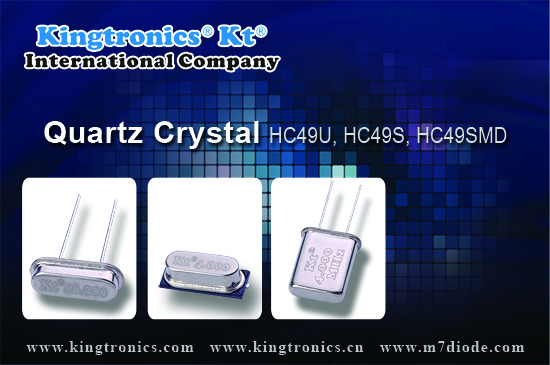
Kingtronics Use of MLCC Capacitors
5 Mar 2011Multi-layer ceramic chip (MLCC) capacitors are used quite often in dc-dc converter input and output filters. They have low ESR, low ESL, and low cost. They also have no major reliability problems associated with them.
All these properties make them suitable for power management applications. There are still, however, some issues to consider when using these capacitors in dc-dc converter circuits. Some ceramic capacitors can lose a lot of their value under certain conditions. This lost capacitance can degrade the transient response of a dc-dc converter, or it can even make the control loop of the converter unstable.
- 0Commentary
- Tags:
Telephone / fax / modem protection
Telephones, faxes and modems are equipped with sophisticated but sensitive electronics. Typical circuits used to protect them with surge arresters are shown in following Fig.
These arresters protect against common-mode interference voltages, i.e. surge voltages that appear in both lines to ground. In the event of an over voltage, the arrester protects both exchange lines by conducting the surge current away to ground.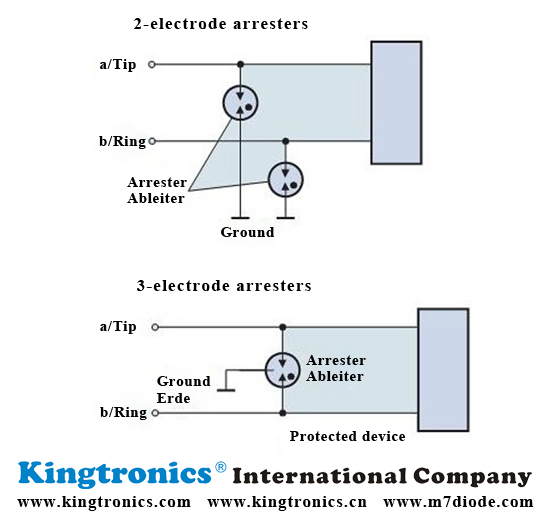
Transducers
Potentiometers are also very widely used as a part of displacement transducers because of the simplicity of construction and because they can give a large output signal.
Computation
In analog computers, high precision potentiometers are used to scale intermediate results by desired constant factors, or to set initial conditions for a calculation. A motor-driven potentiometer may be used as a function generator, using a non-linear resistance card to supply approximations to trigonometric functions. For example, the shaft rotation might represent an angle, and the voltage division ratio can be made proportional to the cosine of the angle.
- 0Commentary
- Tags:
Kingtronics Tantalum capacitors Anode
2 Mar 2011Tantalum capacitors are manufactured from a powder of relatively pure tantalum metal. The typical particle size is between 2 and 10 μm. Figure below shows increasing surface area powders. Surface area is expressed in capacitance (C) in microfarads (µF) times voltage (V) in volts (V) per gram of powder (CV/g) Note the very great difference in particle size between the powders.
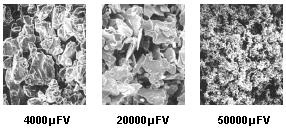
- 0Commentary
- Tags:
One advantage of remembering this layout for a bridge rectifier circuit is that it expands easily into a polyphase version in Figure below
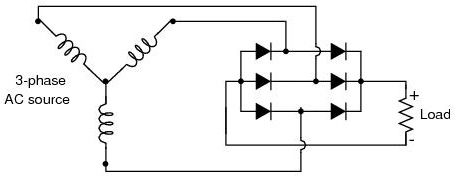
- 0Commentary
- Tags:
Kingtronics Quartz Crystal
28 Feb 2011Electronic-grade quartz crystal is single-crystal silica that is free from all visible defects and has piezoelectric properties that permit its use in electronic circuits for accurate frequency control, timing, and filtration. These uses generate practically all the demand for electronic-grade quartz crystal. A smaller amount of optical-grade quartz crystal is used as windows and lenses in specialized devices including some lasers.
More natural quartz crystal was consumed in electronic and optical applications until 1971, when cultured quartz crystal took the lead. Since that time cultured (synthetic) quartz has replaced natural crystal in practically all these applications. The use of natural quartz crystals for carvings and other gemstone applications continued; quartz crystals for this application are discussed in the Gemstones Annual Report of the U.S. Bureau of Mines.
- 0Commentary
- Tags:
Despite the fact that Schottky barrier diodes have many applications in today's high tech electronics scene, it is actually one of the oldest semiconductor devices in existence. As a metal-semiconductor devices, its applications can be traced back to before 1900 where crystal detectors, cat's whisker detectors and the like were all effectively Schottky barrier diodes.
The Schottky diode symbol used in many circuit schematic diagrams may be that of an ordinary diode symbol. However it is often necessary to use a specific Schottky diode symbol to signify that a Schottky diode rather than another one must be used because it is essential to the operation of the circuit. Accordingly a specific Schottky diode symbol has been accepted for use. This Schottky diode symbol is shown below:
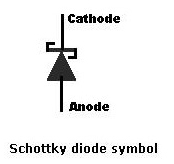
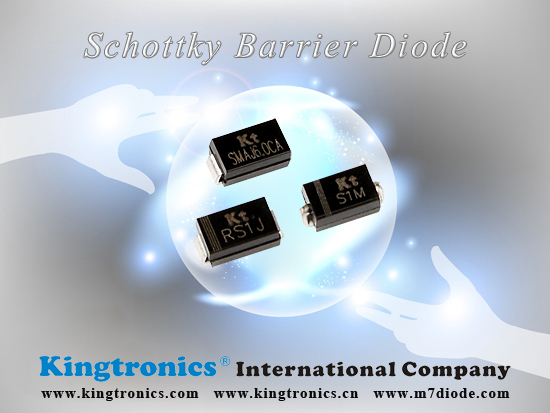
Kingtronics About Trimming Potentiometers
25 Feb 2011Variable resistors used as potentiometers have all three terminals connected.

This arrangement is normally used to vary voltage, for example to set the switching point of a circuit with a sensor, or control the volume (loudness) in an amplifier circuit. If the terminals at the ends of the track are connected across the power supply then the wiper terminal will provide a voltage which can be varied from zero up to the maximum of the supply.
- 0Commentary
- Tags:
The equivalent series resistance (ESR) of a solid tantalum capacitor is frequency dependent. The curves of Figure 6 are typical of the capacitor values noted, with measurements being made by contacting lead wires 1/4 inch from the ends of the capacitor cases. Since ESR decreases with frequency, AC performance at higher frequencies is considerably better than would be predicted from the 120 Hz ratings.
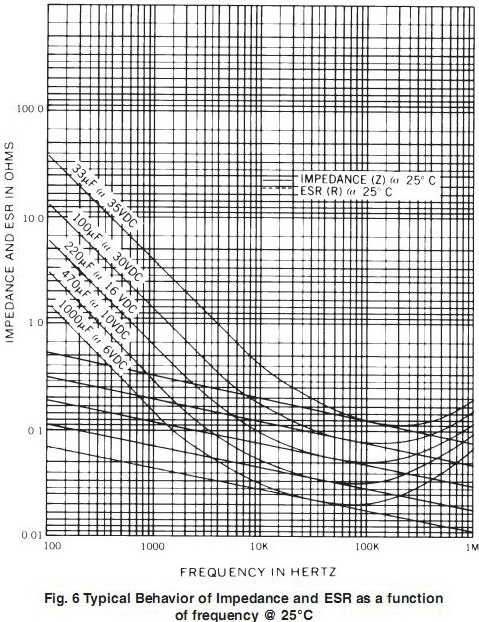
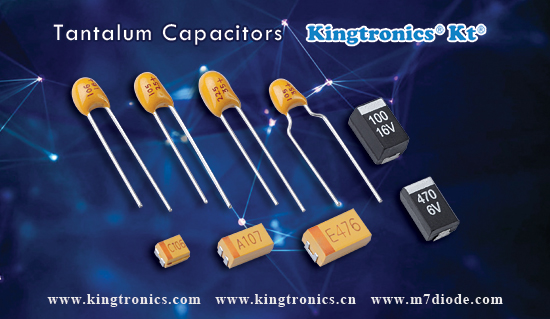
Contact us
Tel: (86) 769 8118 8110
Tel: (852) 8106 7033
Fax: (852) 8106 7099
E-mail: info@kingtronics.com
Microsoft Teams: Kingtronics.sales via Teams
Web: www.Kingtronics.com
YouTube: www.youtube.com/c/Kingtronicskt
About
Kingtronics International Company was established in 1995 located in Dongguan City of China to handle all sales & marketing for factories located in Chengdu, Sichuan and Zhaoqing, Guangdong, China. In 1990, we established the first factory to produce trimming potentiometer and in 1999 we built up new factory in Zhao Qing, Guangdong. Now with around 850 workers, Kingtronics produce trimming potentiometers, dipped tantalum capacitors, multilayer ceramic capacitors, and diode & bridge rectifier. We sell good quality under our brand Kingtronics, and Kt, King, Kingtronics are our three trademarks. All our products are RoHS compliant, and our bridge rectifier have UL approval. Please visit our Products page, you could please download all our PDF datasheet and find cross reference for our Trimming Potentiometer and capacitors.
Tantalum and Ceramic Capacitors Cross Reference ↓ Download
Diodes & Rectifiers List(PDF: 97KB) ↓ Download
Trimming Potentiometer Cross Reference ↓Download
Categories
- Kt Kingtronics (245)
- Diodes & Rectifiers (161)
- Aluminum Electrolytic Capacitor (161)
- Trimming Potentiometers (128)
- Tantalum Capacitors (96)
- Multilayer Ceramic Capacitors (70)
- Quartz Crystals (64)
- Kt Bridge Rectifier (64)
- Film Capacitors (35)
- Surge Arresters (34)
- Tactile Switches (32)
- Kt Kingtronics Components (30)
- Ceramic Trimmer Capacitors (26)
- Super Capacitors (19)
- Metal Oxide Varistor (12)
- Negative Temperature Coefficient Thermistor (6)
- Special Purpose Film Capacitors (3)
- Music capacitors (2)
Archives
- 2025 April (2)
- 2025 March (3)
- 2025 February (3)
- 2025 January (4)
- 2024 December (2)
- 2024 November (5)
- 2024 October (4)
- 2024 September (6)
- 2024 August (9)
- 2024 July (6)
- 2024 June (5)
- 2024 May (3)
- 2024 April (3)
- 2024 March (2)
- 2024 February (2)
- 2024 January (3)
- 2023 December (1)
- 2023 November (2)
- 2023 October (1)
- 2023 September (2)
- 2023 August (2)
- 2023 July (4)
- 2023 June (12)
- 2023 May (6)
- 2023 April (4)
- 2023 March (3)
- 2023 February (2)
- 2023 January (1)
- 2022 December (3)
- 2022 November (2)
- 2022 October (3)
- 2022 September (4)
- 2022 August (3)
- 2022 July (3)
- 2022 June (2)
- 2022 May (3)
- 2022 April (4)
- 2022 March (4)
- 2022 February (2)
- 2022 January (3)
- 2021 December (4)
- 2021 November (3)
- 2021 October (4)
- 2021 September (4)
- 2021 August (4)
- 2021 July (4)
- 2021 June (5)
- 2021 May (4)
- 2021 April (3)
- 2021 March (4)
- 2021 February (4)
- 2021 January (4)
- 2020 December (5)
- 2020 November (4)
- 2020 October (4)
- 2020 September (7)
- 2020 August (8)
- 2020 July (9)
- 2020 June (8)
- 2020 May (9)
- 2020 April (11)
- 2020 March (6)
- 2020 February (4)
- 2020 January (4)
- 2019 December (6)
- 2019 November (7)
- 2019 October (6)
- 2019 September (5)
- 2019 August (9)
- 2019 July (6)
- 2019 June (4)
- 2019 May (16)
- 2019 April (6)
- 2019 March (6)
- 2019 February (9)
- 2019 January (5)
- 2018 December (4)
- 2018 November (4)
- 2018 October (5)
- 2018 September (8)
- 2018 August (10)
- 2018 July (7)
- 2018 June (12)
- 2018 May (22)
- 2018 April (4)
- 2018 March (4)
- 2018 February (8)
- 2018 January (13)
- 2017 December (4)
- 2017 November (4)
- 2017 October (5)
- 2017 September (4)
- 2017 August (20)
- 2017 July (7)
- 2017 June (5)
- 2017 May (4)
- 2017 April (4)
- 2017 March (8)
- 2017 February (8)
- 2017 January (8)
- 2016 December (10)
- 2016 November (16)
- 2016 October (8)
- 2016 September (10)
- 2016 August (13)
- 2016 July (12)
- 2016 June (10)
- 2016 May (14)
- 2016 April (8)
- 2016 March (10)
- 2016 February (6)
- 2016 January (8)
- 2015 December (10)
- 2015 November (8)
- 2015 October (3)
- 2015 July (5)
- 2015 June (9)
- 2015 May (7)
- 2015 April (8)
- 2015 March (9)
- 2015 February (7)
- 2015 January (5)
- 2014 December (13)
- 2014 November (4)
- 2014 October (4)
- 2014 September (5)
- 2014 August (4)
- 2014 July (4)
- 2014 June (4)
- 2014 May (4)
- 2014 April (4)
- 2014 March (5)
- 2014 February (3)
- 2014 January (4)
- 2013 December (8)
- 2013 November (9)
- 2013 October (10)
- 2013 September (9)
- 2013 August (11)
- 2013 July (10)
- 2013 June (3)
- 2013 May (4)
- 2013 April (3)
- 2013 March (2)
- 2013 February (1)
- 2013 January (3)
- 2012 December (5)
- 2012 November (6)
- 2012 October (5)
- 2012 September (10)
- 2012 August (11)
- 2012 July (11)
- 2012 June (12)
- 2012 May (14)
- 2012 April (9)
- 2012 March (14)
- 2012 February (9)
- 2012 January (6)
- 2011 December (9)
- 2011 November (11)
- 2011 October (10)
- 2011 September (13)
- 2011 August (14)
- 2011 July (13)
- 2011 June (13)
- 2011 May (13)
- 2011 April (14)
- 2011 March (27)
- 2011 February (13)
- 2011 January (24)
- 2010 December (21)
- 2010 November (12)
- 2010 October (11)
